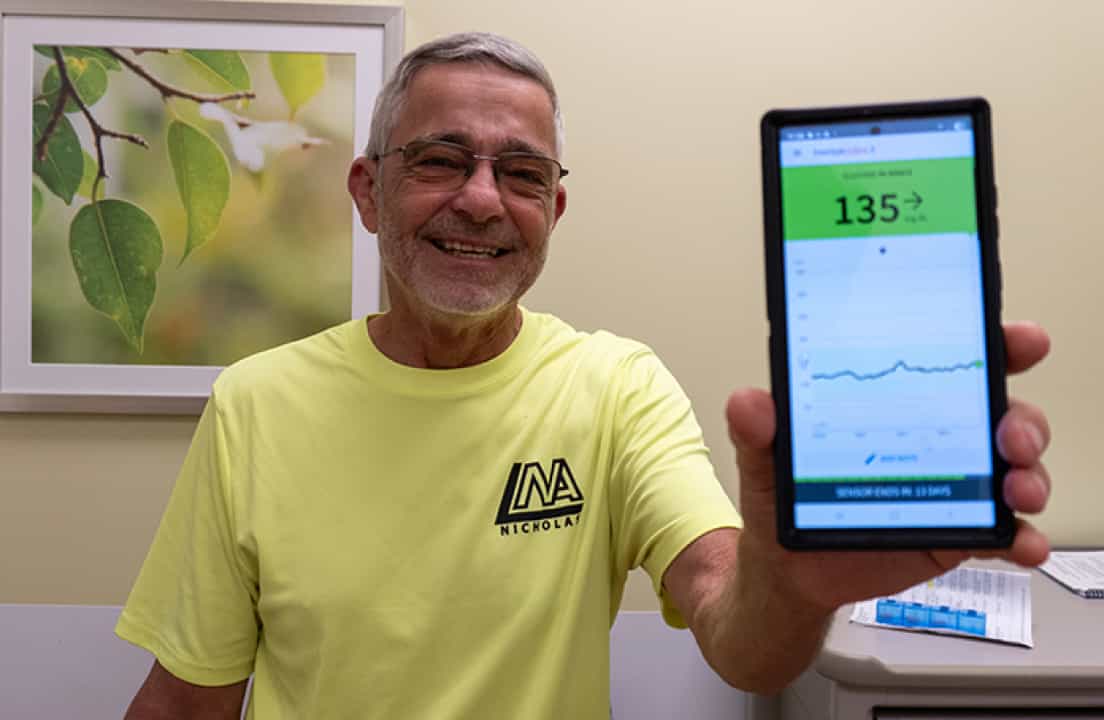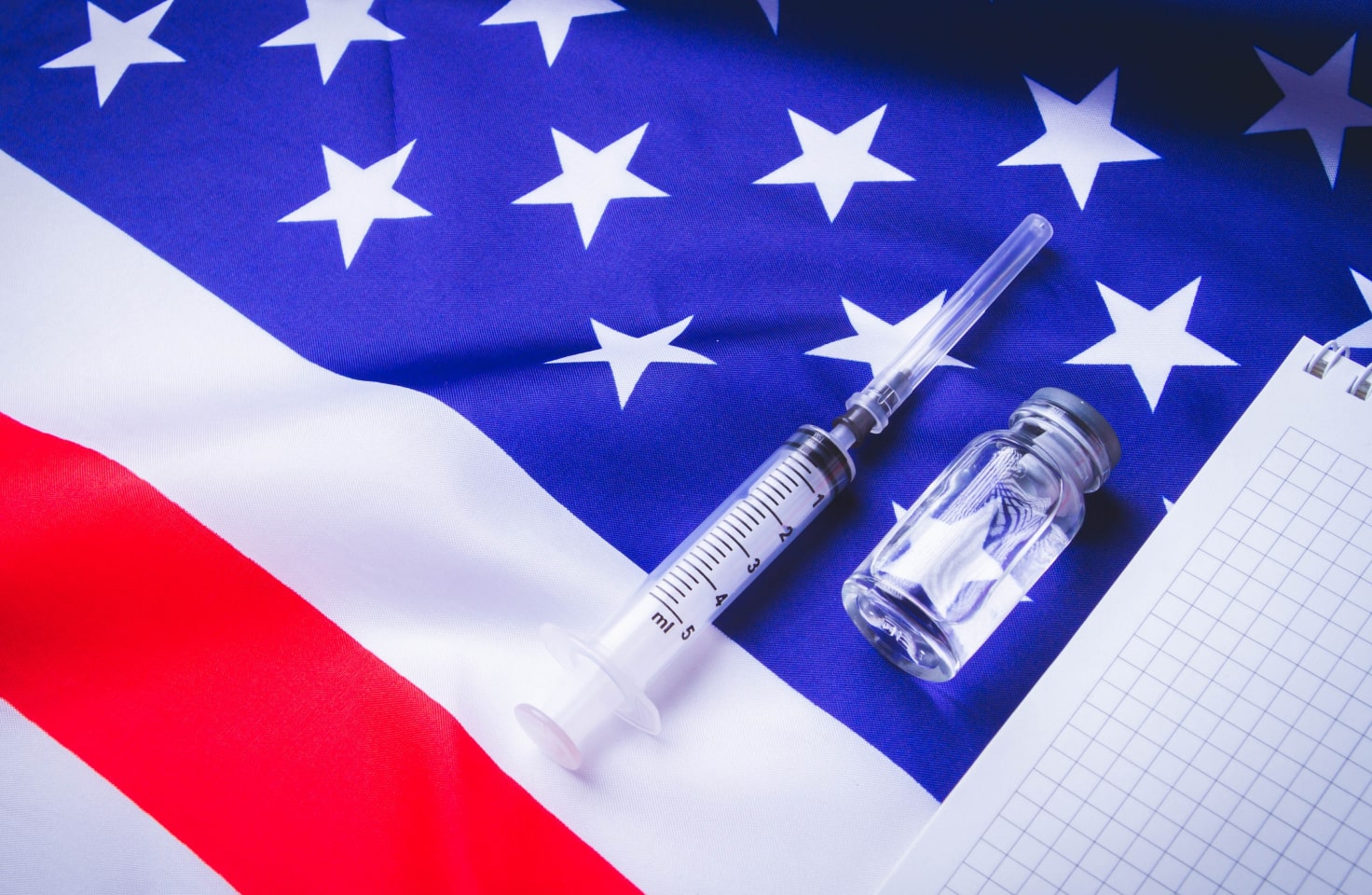T1D Guide
T1D Strong News
Personal Stories
Resources
T1D Misdiagnosis
T1D Early Detection
Research/Clinical Trials
Pumping Iron and Pumping Insulin: How the Two Go Hand in Hand
The benefits of strength training are endless. It builds muscle mass, aids in weight loss, increases bone health and elevates endorphins. But did you know for people with type 1 diabetes, lifting weights helps the body respond better to insulin by improving the way the body uses blood sugar? Pumping iron for 30 minutes three times a week prompts muscles to absorb more glucose faster and more efficiently.

On an average day, people with type 1 diabetes (T1D) are faced with a myriad of thoughts. Not only might they be wondering if they forgot to take their morning vitamins and reminiscing (or cringing) over the final score of last night’s game, but they might also be asking themselves more detrimental questions relating to diabetes care.
Did I remember to replenish my supply of low-carb snacks? Do I need to change my Omnipod soon? Did I call the pharmacy to pick up my new transmitter? These kinds of questions, though often not as mundane as the day-to-day ones, are constantly circulating inside the head of someone with T1D.
Moreover, add another factor to the equation. Maybe you’re on vacation in some exotic locale with an already limited amount of very necessary supplies. Did I remember to pack enough insulin for the week? What if you have some unlucky insertion sites and are now running off fewer pump and continuous glucose monitor (CGM) sensors than expected? Am I going to run out of sensors? These everyday worries can be demanding, and anxiety can increase blood sugar levels. However, exercising is the best way to lower high blood sugar, relieve stress and pump up the brain’s feel-good neurotransmitters.
Diabetes and Exercise
Okay, you’ve made the positive choice to commit to exercising, a critical means of getting your heart rate up and an important part of a healthy lifestyle. Not only does exercise lower blood pressure and strengthen your immune system, but it also helps keep blood glucose levels in target range. But now you may be wondering:
- Will physical activity make my blood sugar level go low or high, or even affect it at all?
- Do I need to bring extra fruit snacks to the gym with me?
- Will different types of exercise affect me in different ways?
Well, the answer to these questions is yes, yes, yes— but there is no need to fret! Even though additional questions are brought to the surface for an active person with T1D, they are good queries to ask and answer. Exercise already affects the general population in several different ways, so it’s no wonder that throwing type 1 diabetes into the mix makes things even more complicated. Despite this, if you know where to look, several informative answers exist.

Will Exercise Lower My Blood Sugar?
The real answer to this tricky question for T1Ds is yes and no. Read on to determine which types of physical activity raise blood glucose levels and which types lower your blood sugar. In addition to affecting blood sugar control, you also need to be aware of the exercise duration and insulin on board.
Cardio
One of the most well-known types of exercise is cardio. Cardio, in the form of running, jogging, swimming, or other means, is a great way to increase stamina and endurance. Cardio can be done in various settings, making it incredibly accessible and versatile. If you have a gym membership, here are a few great ways to get your cardio in and your heart pumping.
Cardio Fitness Workouts
- Running on the track or treadmill
- Using a rowing machine
- Getting your steps in on the elliptical Stairmaster.
- Cycling
- Zumba or dance fitness classes
- Swimming
- Pilates or yoga
If no gym membership is available, that’s alright, too. Just head outside, find the nearest sidewalk, and start pounding pavement! Other options could include the local high school track or neighborhood swimming pool, if applicable (and if screaming kids aren’t a deterrent).

No matter your method, it is essential to note that cardio does typically lower blood sugar, so here are a few great ways to prevent lows and maintain that runner’s high.
Quick Tips to Prevent Lows
Extra Snacks
Though low blood sugar episodes are inconvenient, be prepared for them by packing extra snacks in case of dipping blood sugar. Glucose gels and tablets are the perfect pocket-size remedies. Try these tricks for other low-carb snack options to raise blood sugar levels quickly.
Hydrate
Also, make sure you are hydrating properly! As lows can often be accompanied by feelings of faintness and fatigue, it's vital to ensure you can tell when your body is going low by taking extra good care of it in the first place.
Fuel Up
If you’re planning an intense routine, fuel up with a healthy high protein/high carb snack.
Pro Tip: Before engaging in any physical exercise, individuals with diabetes should monitor their blood sugar closely. The American Diabetes Association (ADA) advises if blood sugar is below 100 mg/dL, it’s important to consume a small snack of 15 to 30 grams of carbohydrates:
Some healthy low-carb snack options:
- Fruit juice (Four ounces)
- Fruit (apple, banana, handful of grapes or berries)
- A handful of dried fruit
- Protein or granola bar

Moreover, the ADA recommends healthy meal planning by combining protein with carbohydrates before exercise to help ensure glucose level stability. Some quick protein add-ons include:
- A tablespoon of peanut butter
- A few slices of turkey
- A handful of healthy nuts (almonds, walnuts, pistachios)
- A low-fat cheese stick
- Chickpeas
- Hummus and crackers
Pro Tip: To eat well and make healthy food choices, talk to your health care provider or registered dietician about the Diabetes Plate Method. Maintaining a balanced diet of lean meats, non-starchy vegetables and complex carbohydrates helps the body perform more efficiently. Adjust your eating plan with smaller portion sizes and add nutritional variety to your diet.
The Mind-Body Training of Yoga
Another rather common means of exercise that offers significant benefits to individuals with diabetes is practicing yoga. Like cardio, yoga is versatile and can be done in several places.
Do you lead a busy life and need an exercise with TLC that won’t cut too much into your day? With the help of a yoga mat and your favorite pair of leggings, yoga can be practiced in the comfort of your own home. If you don’t belong to a gym, try one of the many apps or websites online.

However, to take your commitment to the next level, find a local yoga studio near you and participate in whatever class interests you the most! Here are a few of the many types of yoga to check out.
Different Types of Yogism:
- Core power yoga
- Hatha yoga
- Hot yoga
- Chair yoga
- Karma yoga
- Aerial yoga
- Prenatal yoga
- Jivamukti yoga
Pro Tip: The National Institutes of Health suggest yoga postures may enhance the sensitivity of beta cells to glucose, improving insulin secretion. Also, yoga may help increase muscle blood supply and improve glucose intake.
Other Benefits of Yoga
Yoga is known for its relaxing and meditation applications. Since yoga decreases the stress that make someone’s blood sugar rise unhealthily, yoga’s tendency to lower blood sugar has even more benefits! Still, always keep an eye on those levels and be prepared to treat a low. Another great way to reduce stress through mind-body practices is through deep breathing exercises and meditation. DiabetesSangha is a movement within the diabetes online community (DOC) to initiate meditative practices.
Which Exercises Raise Blood Sugar?
According to the ADA, several workouts produce adrenaline (stress hormones) and may cause a spike in blood sugar levels. Heavy weightlifting, sprints and competitive sports could contribute to high blood glucose levels. Adrenaline stimulates your liver, resulting in high blood glucose.
Weightlifting
Whether you’re powerlifting or more into bodybuilding, weightlifting can offer a plethora of health advantages, ranging from increased muscle growth to an increase in energy. Much different from cardio, weightlifting builds off of the concept of progressive overload, where an exercise is completed until failure is achieved, and the weight is gradually increased.
Weightlifting also focuses on high weight with low reps, which may look like three sets with six to eight reps of 45 pounds versus three sets with 10 to 12 reps each of 30 pounds.
An analogy that may help understand this:
High weight, low reps versus low weight, high reps is similar to sprinting versus running, therefore highlighting sprinting as another exercise that increases blood sugar.
When you are weightlifting, your body releases adrenaline that causes your blood sugar to rise. Though this increase of adrenaline in your system aids you during your workout and increases the quality of your lift, it also increases the necessary awareness for those with type 1 diabetes.

Other helpful tips regarding weightlifting and type 1 diabetes include:
Low blood sugar during cardio often leaves you feeling potentially faint and a little woozy. It is not uncommon to feel this way after completing a heavy set! Therefore, even though weightlifting typically has the opposite effect, monitoring your blood glucose for any sneaky, unexpected lows is still important.
Often accompanied by weightlifting are the concepts of bulking and cutting. Bulking revolves around an increased calorie intake for a period of time in order to give your body more sustenance to build muscle while cutting often follows and consists of further decreasing your calorie intake in order to burn off the fat leftover from bulking and better display muscle growth. Though bulking and cutting are safe when done correctly, people with type 1 diabetes need to be aware of their increase/decrease in carb intake during these processes!
Interesting Fact: The ADA recommends weight lifting for T1Ds, in addition to physical activity, as “resistance training improves blood glucose control, decreases fat mass, increases muscle mass and improves strength.”
Exercise Management with Type 1 Diabetes
No matter which is right for you, there are sure to be a variety of benefits that come with your new healthy hobby of exercising. Maintaining a healthy weight improves glycemic control, reduces heart disease, lowers high blood pressure, and increases your insulin response.
Always consult with your diabetes care team before beginning an exercise regime or meal planning. As for those with type 1 diabetes, though there are a few extra questions to address when beginning a new exercise, the overarching positives of your increased health awareness and physical movement are sure to make it worth it!








.webp)
.jpg)
.jpeg)

.webp)
.jpg)
.jpg)




.jpg)



.jpg)




.jpg)

.jpg)



.jpg)

.jpg)




.jpg)
.jpg)
.jpg)
.jpg)
.jpg)
.jpg)
.jpg)

.jpg)
.jpg)

.jpg)



.jpg)
.jpg)
.jpg)

.jpg)

.jpg)














.jpg)


.jpg)







.webp)











.webp)




















.webp)